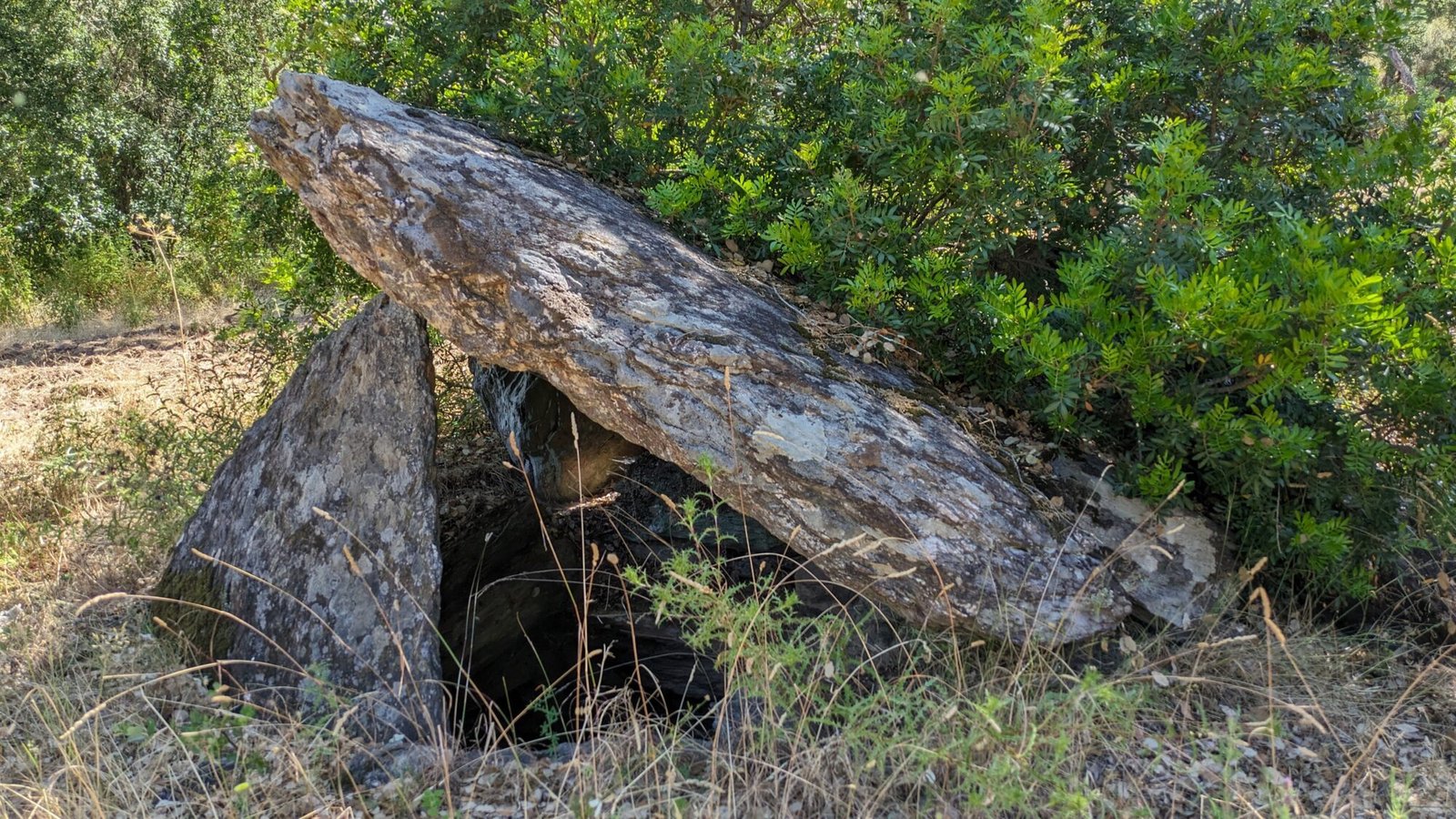In the quiet countryside of the Alto Alentejo, the water of the Santa Margarida stream flows slowly down to the Montargil reservoir. Along its banks, if you look carefully among the trees and bushes, lie two prehistoric tombs made of schist. They’ve endured some rough handling through the ages since they were built, both by humans and by the trees growing in and around them. But their presence is a solid reminder of how humans have lived and died here for many thousands of years.
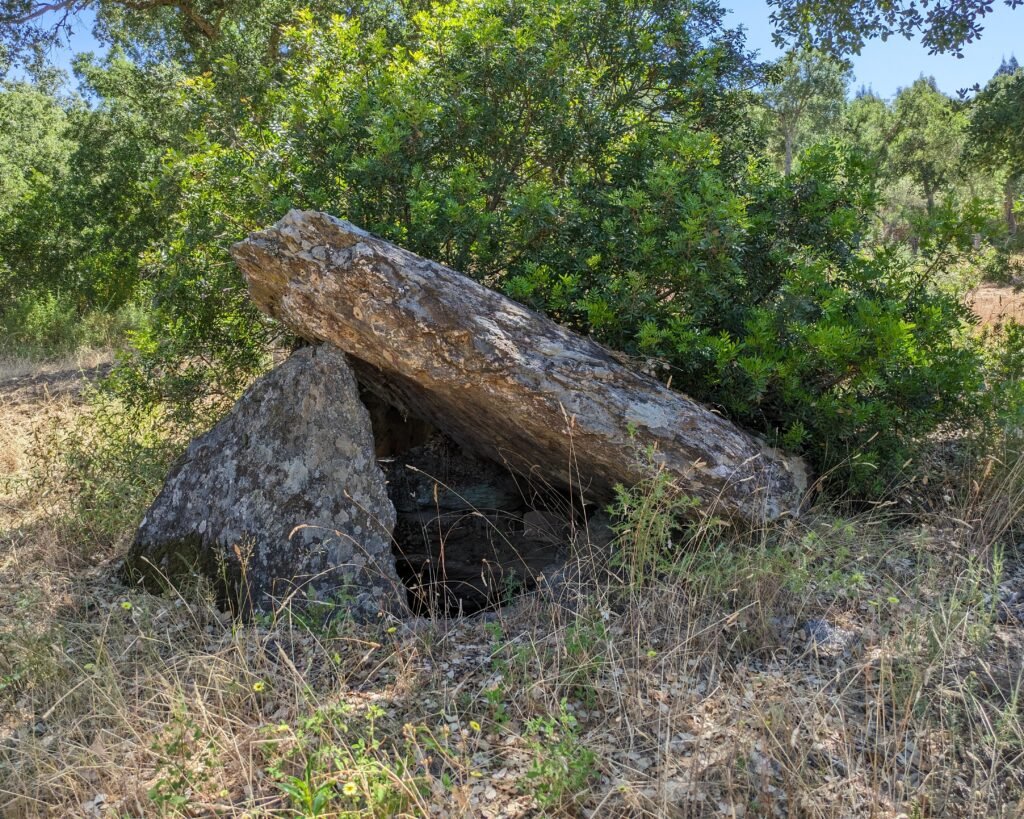
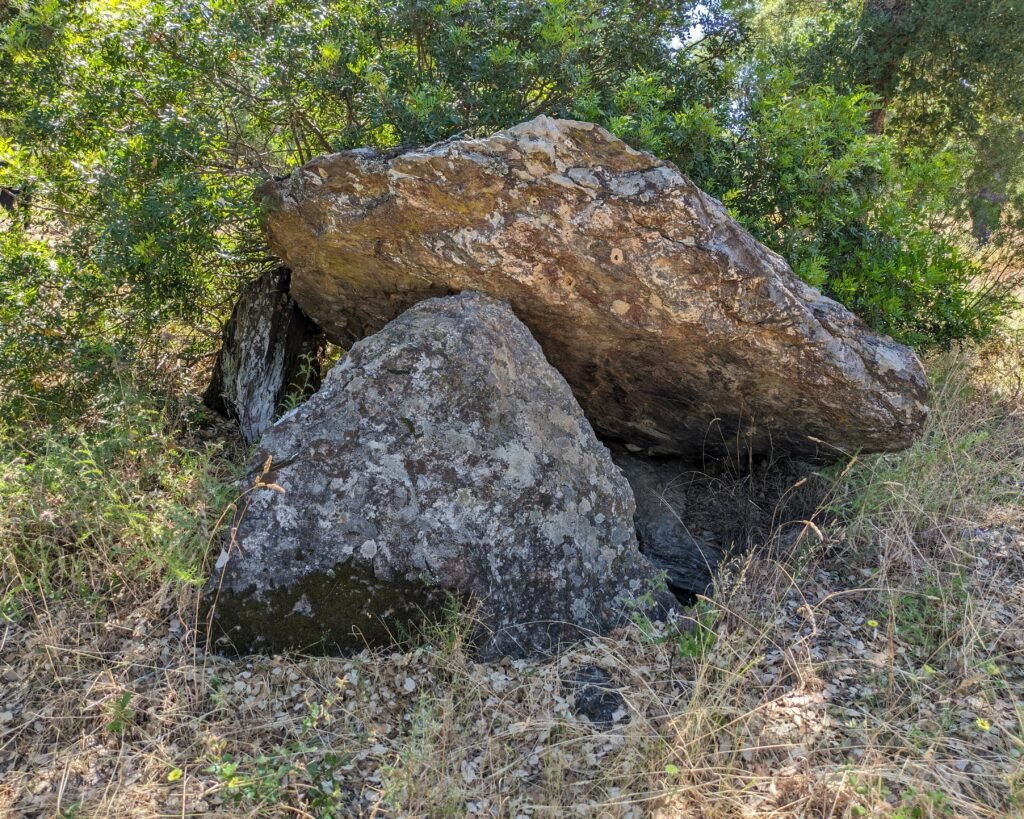
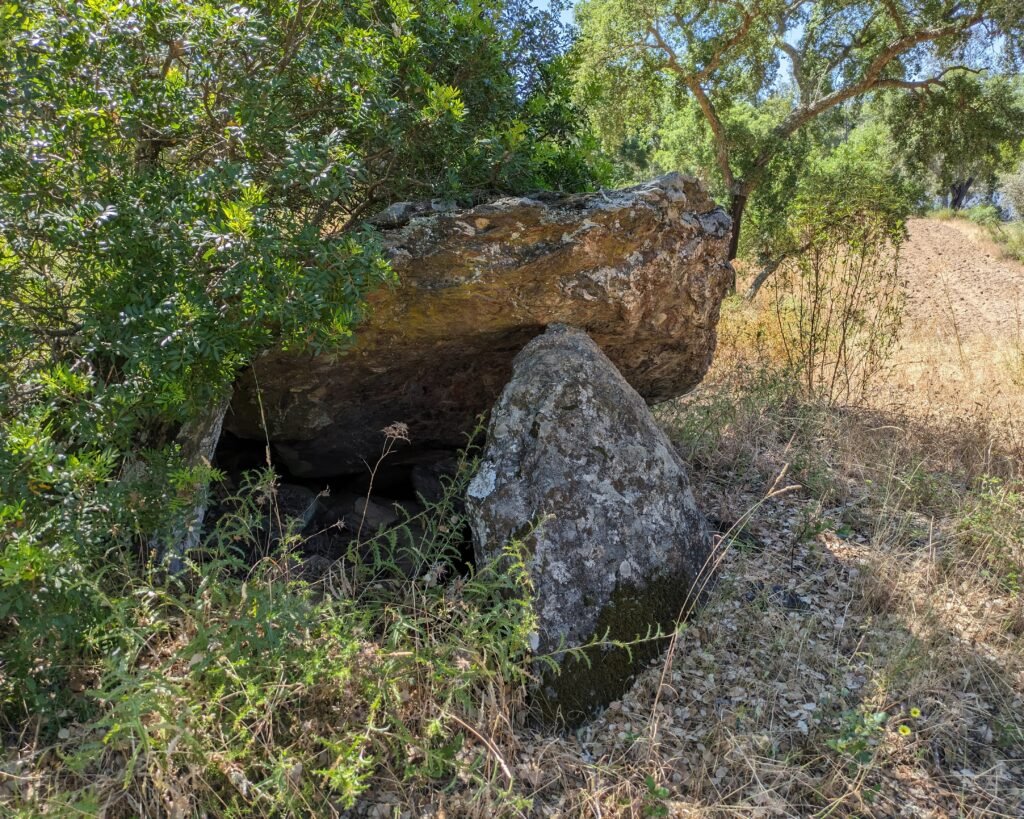
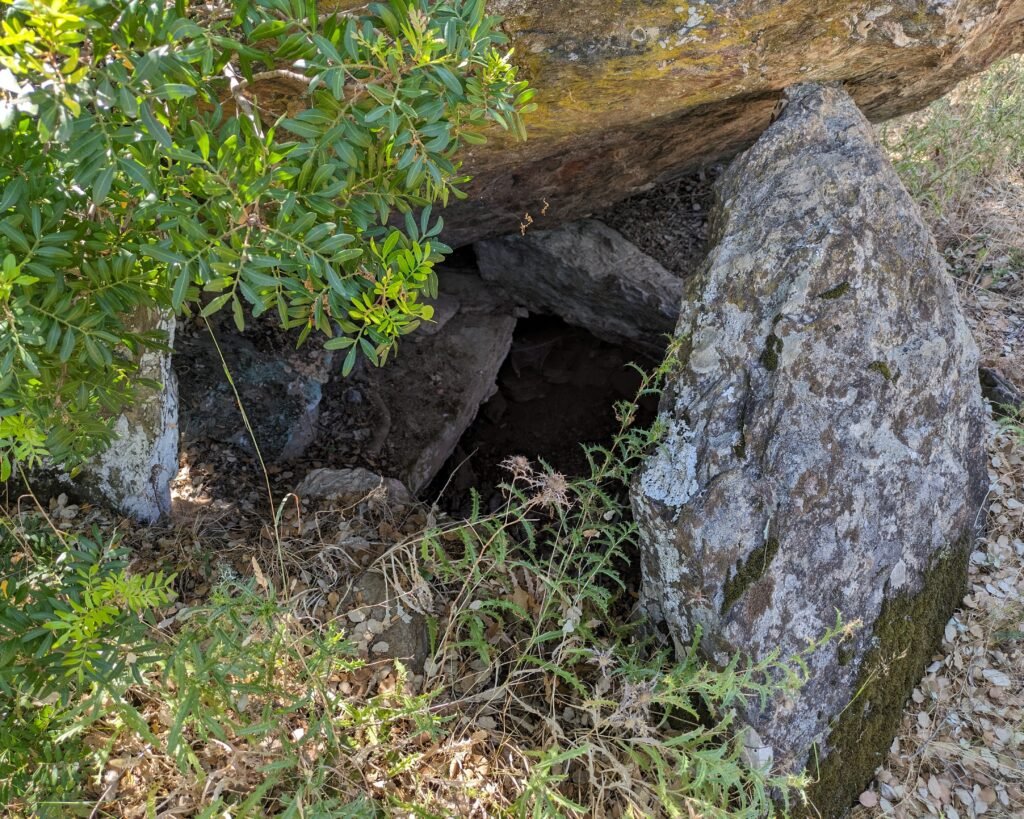
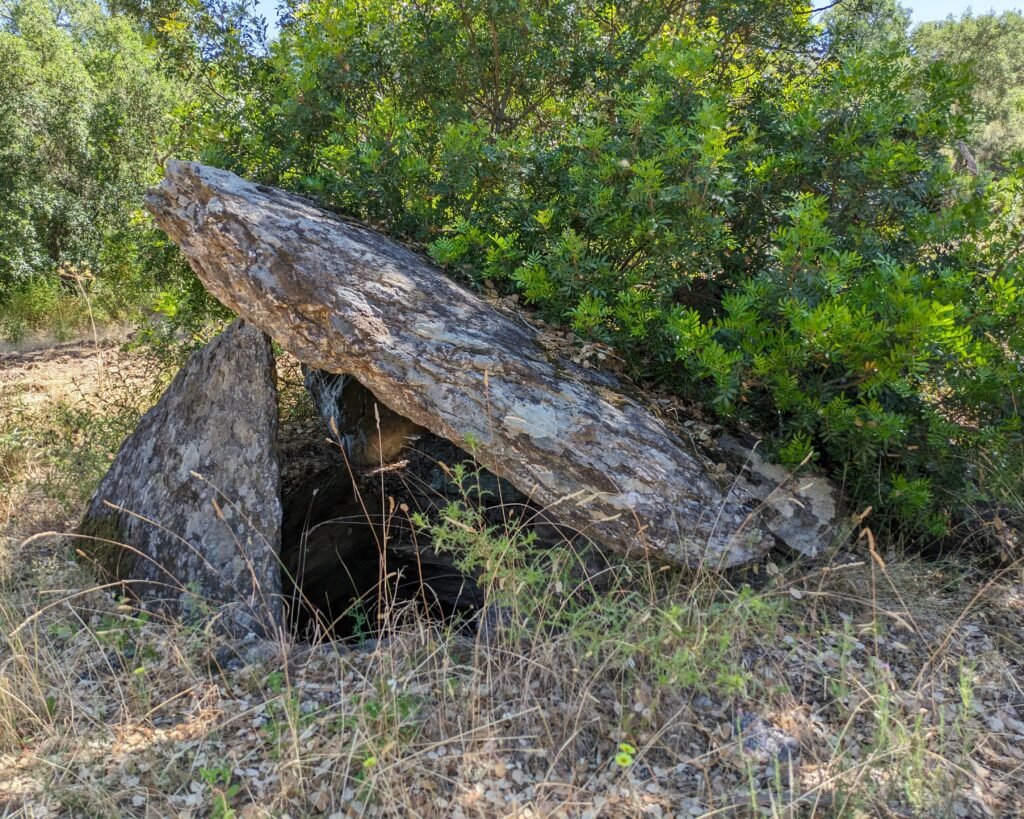
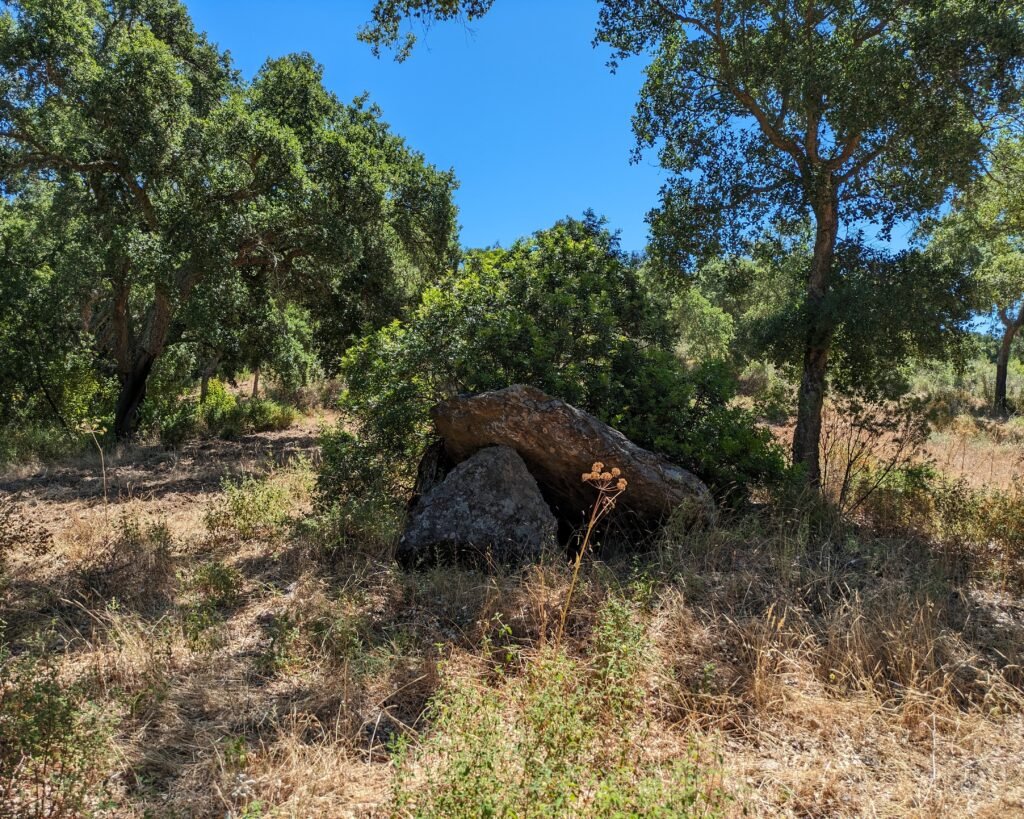
Morenos 3 (above) is the better preserved of the two remaining antas (dolmens). It is about 3m in diameter, and some traces of its mamoa (tumulus or mound) remain. It has seven uprights, with its capstone fallen into the chamber.
This complex of related antas, all near to each other lined up along the stream, originally had three antas but #2 was destroyed. The existing #1 and #3 are about 380m apart, along the waterfront of the Stream of Santa Margarida. They are medium sized polygonal chambers, with no traces of corridors. Each one is made of schist, which makes their sizes unusually large considering the construction material. (Most schist tombs are smaller.)
Morenos 1 is a little larger, about 3.8m in diameter. It has been disrupted by the large tree growing through it, as well as by being used as a sheep pen! Five uprights remain around the chamber, and the capstone is in evidence, leaning against the tree. Other stones nearby are likely missing uprights.
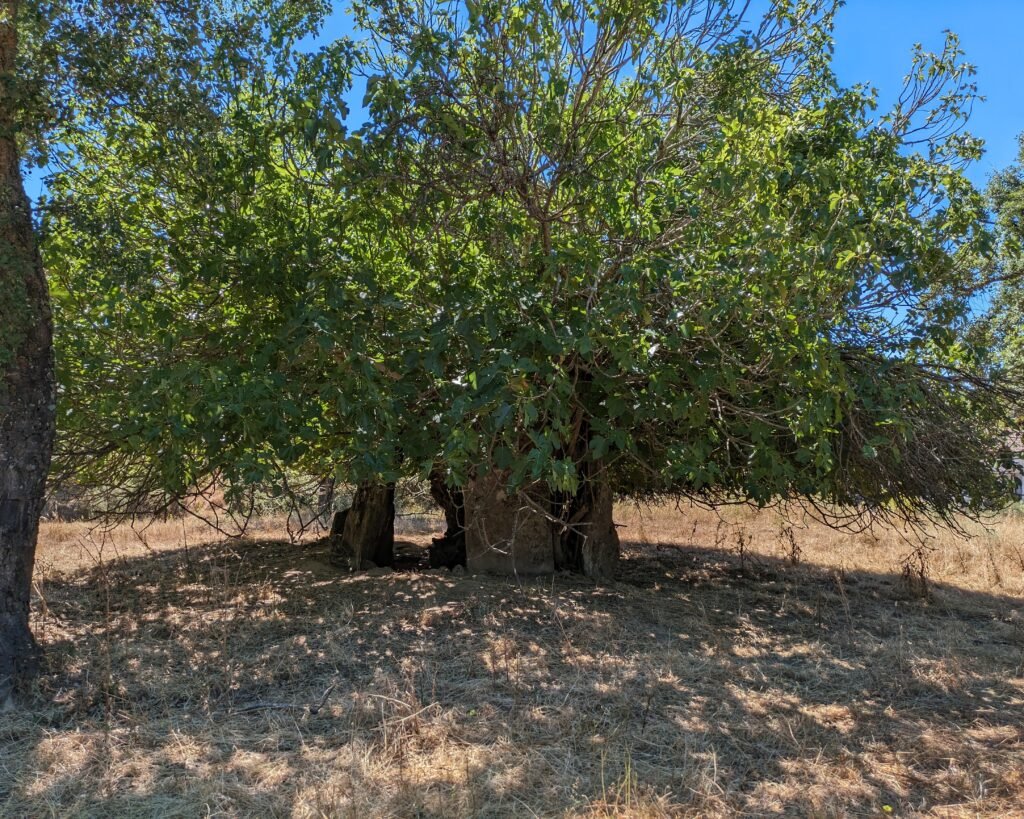
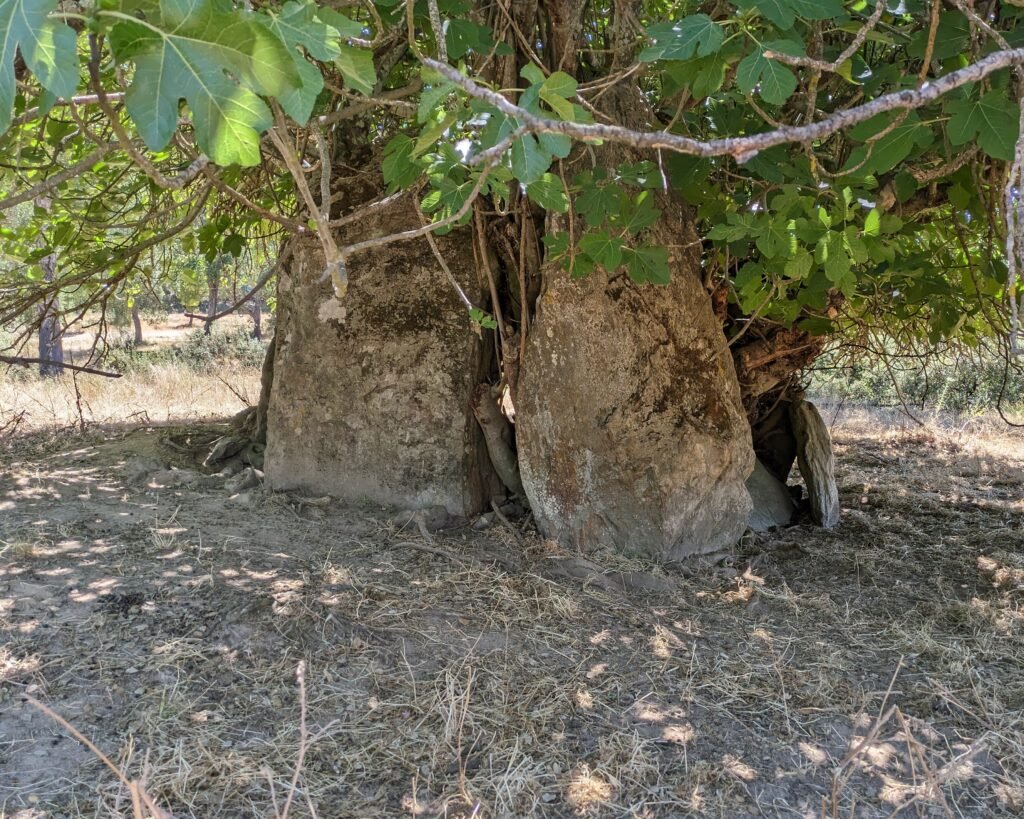
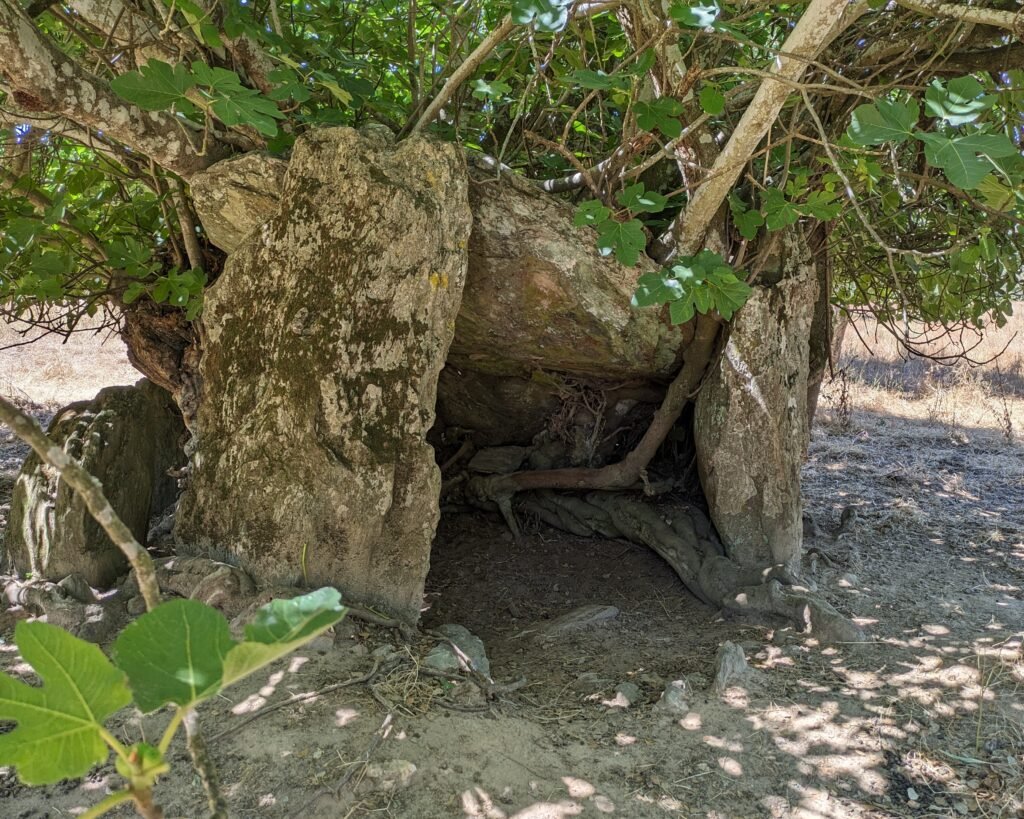
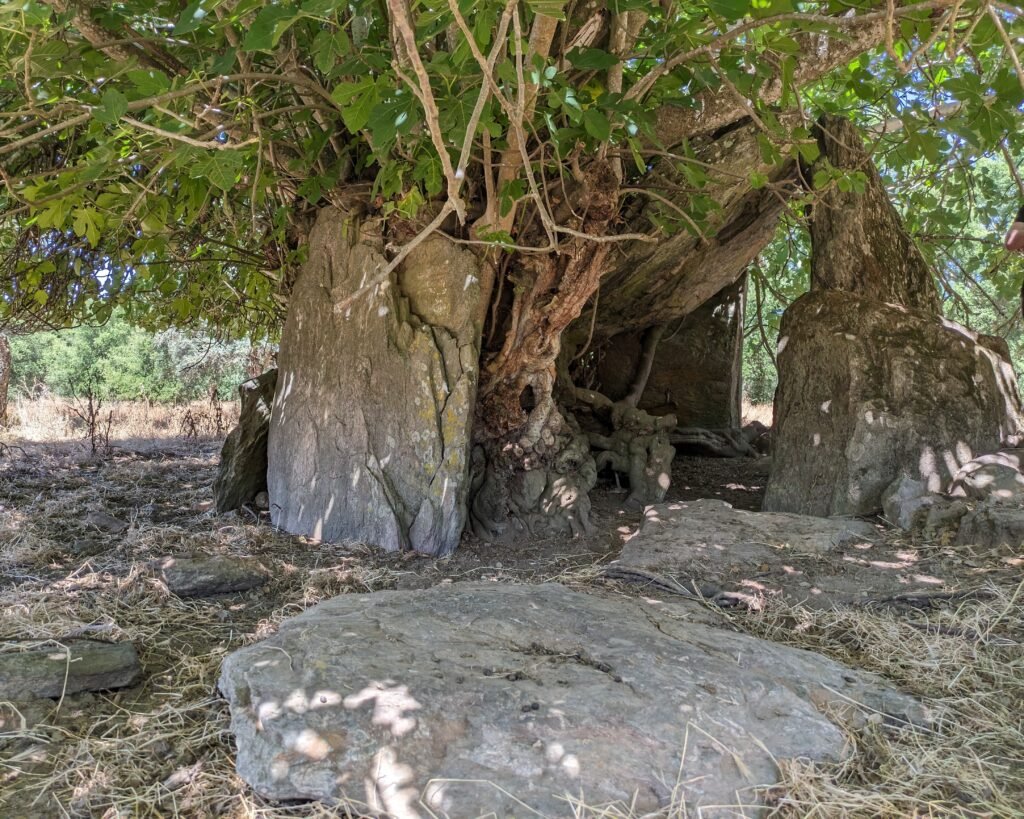
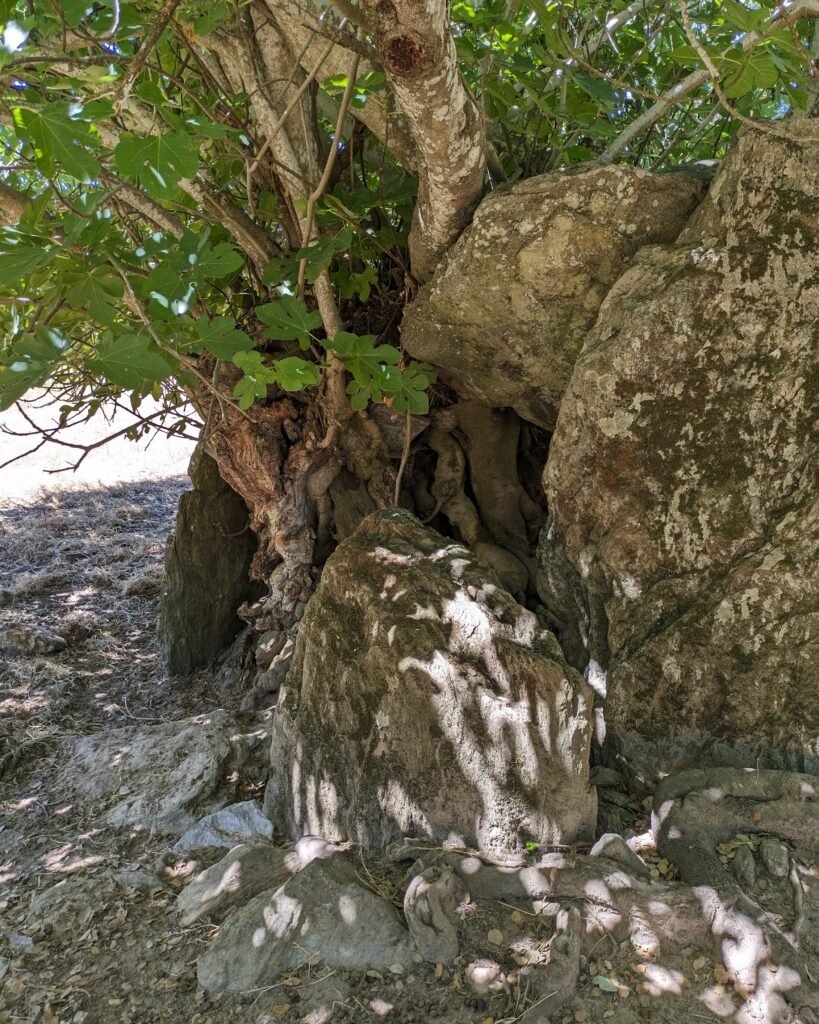
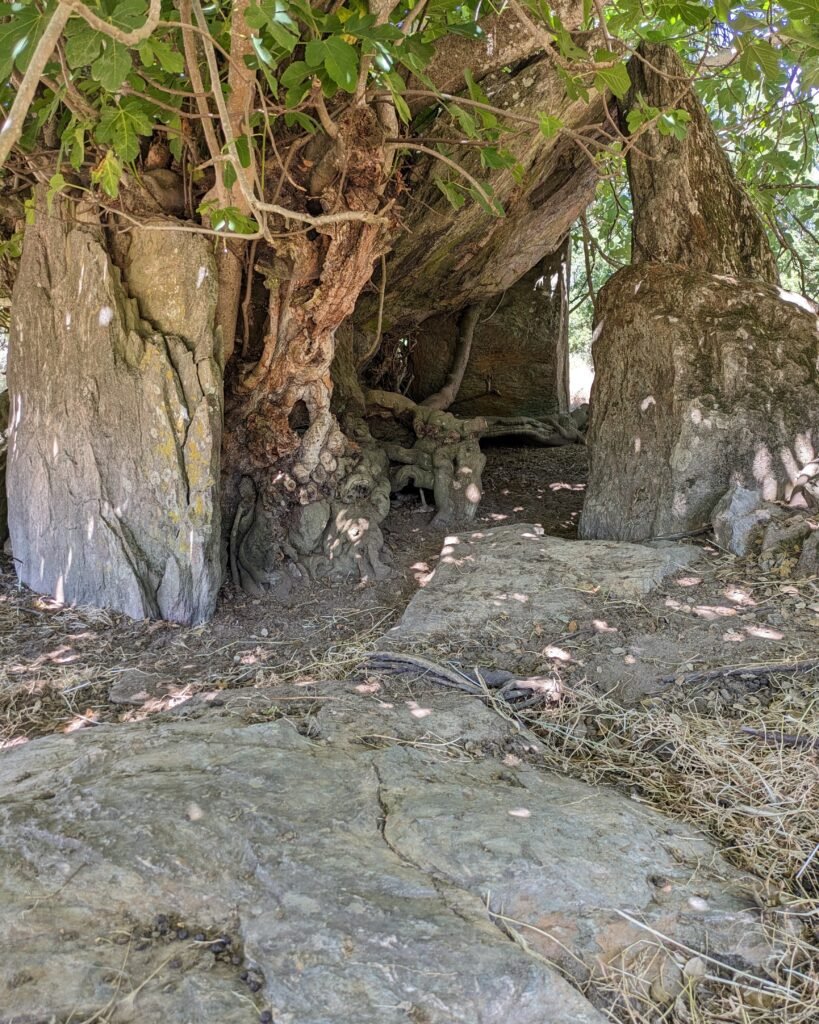
The sites are free to visit, but are hard to find on your own. The Archaeological Centre of Avis has information and hosts occasional walks to promote their Megalithic Route of Avis, “Between Stones and Pebbles.” When I visited the site, it was on a such a walk, guided by archaeologist Ana Cristina Ribeiro. She talked about not only the megalithic sites (of which she has identified scores in the region), but also other evidence of habitation, largely along the streams and rivers. We also learned about the natural conservancy area (preserving biodiversity), saw some of the river beaches along the reservoir, and visited a 17th century church (Senhora da Arrabaça) with a beautiful wooden carving behind the altar, and a long history of pilgrimages.

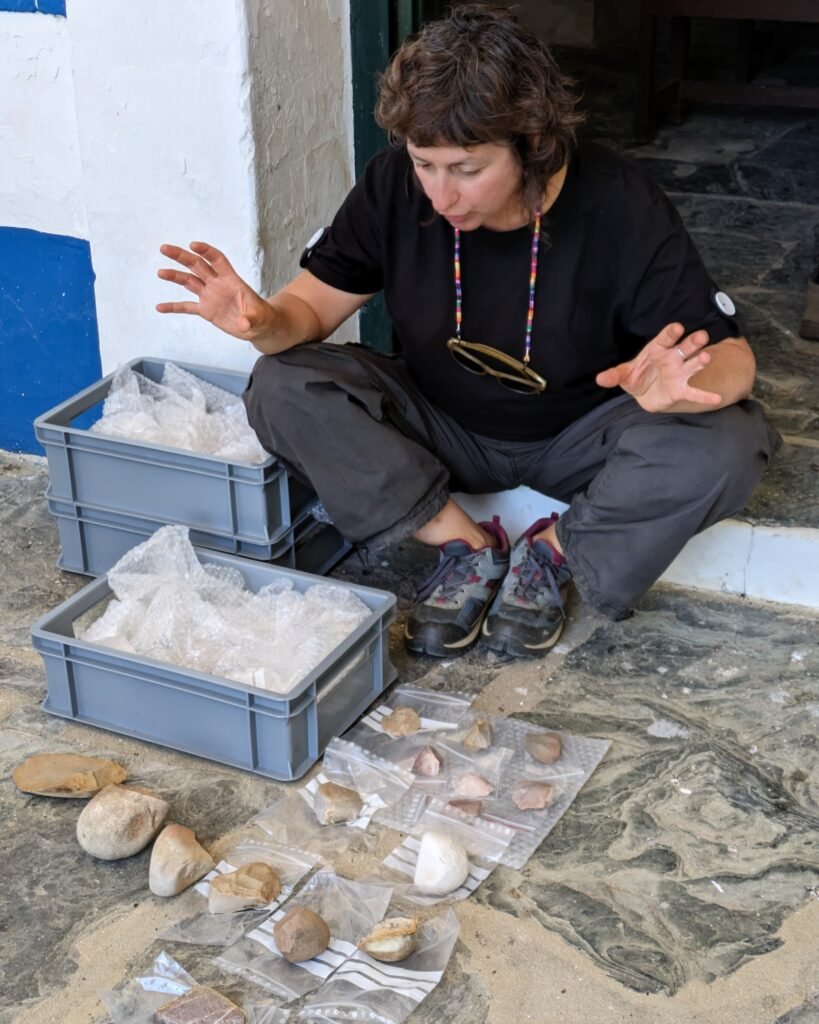
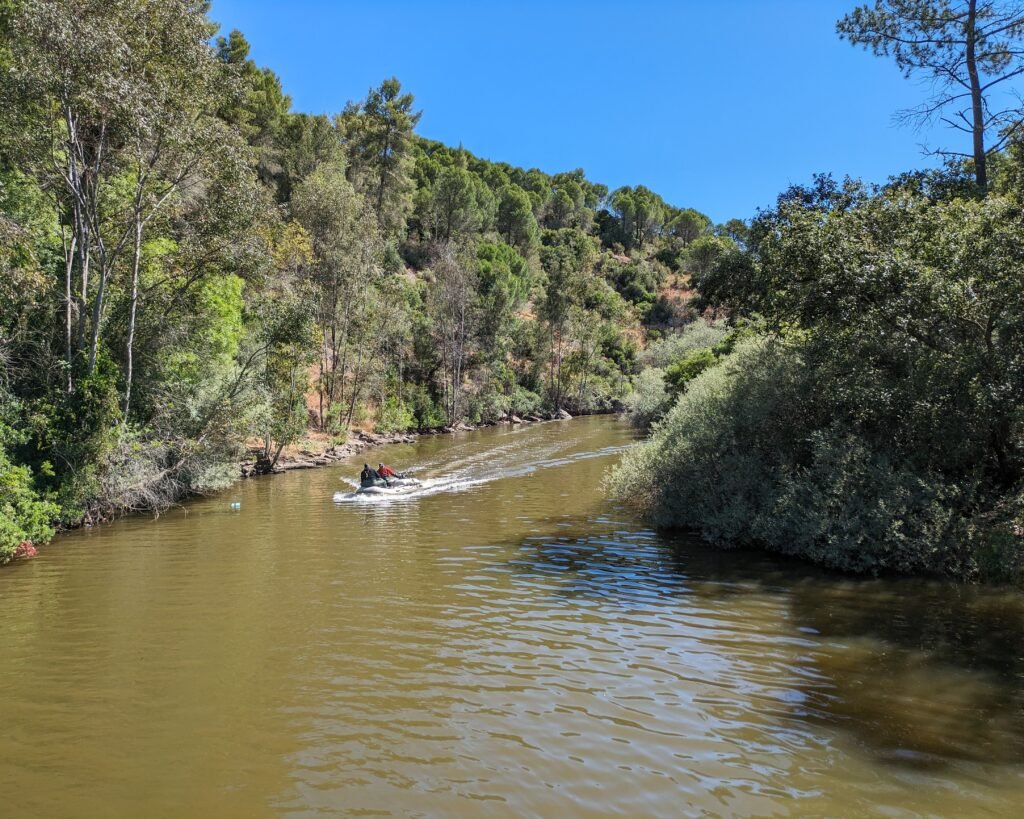
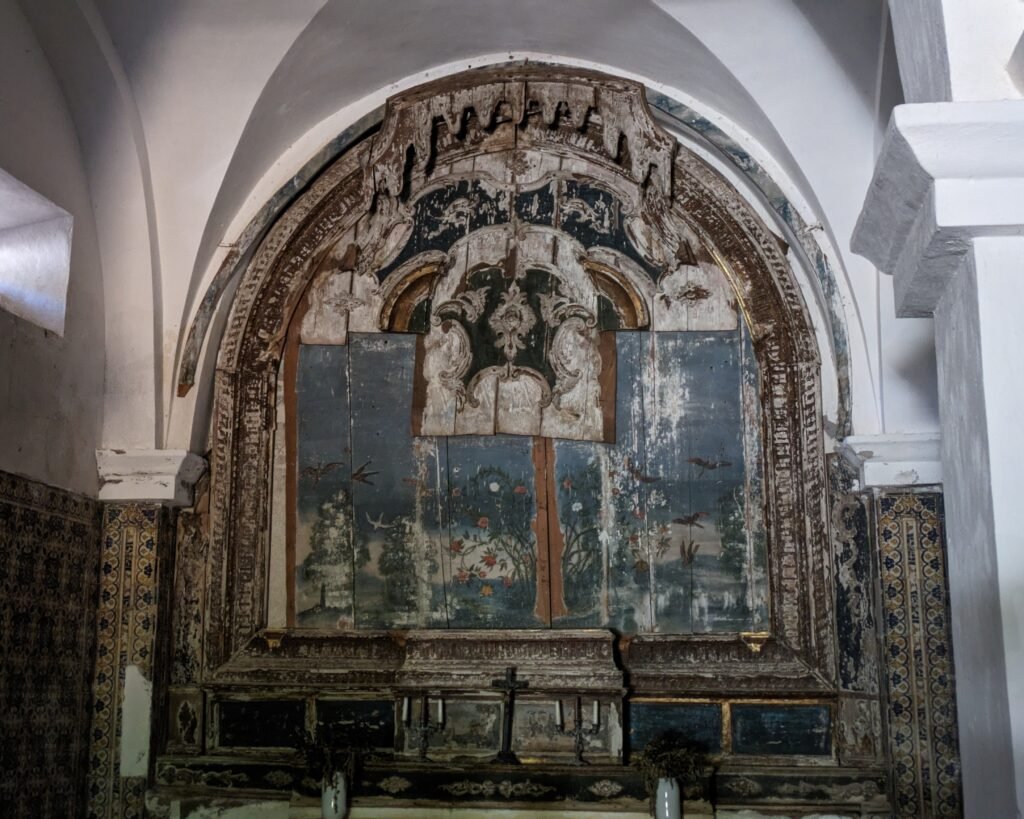
Location
The site is in the Alto Alentejo: Portalegre district, municipality of Avis, near the town of Aldeia Velha. It’s along the northern bank (right side) of the Ribeira (stream) of Santa Margarida, which is part of the reservoir of Montargil.
Access
You can drive to the site by a dirt road, and from the dirt road, each anta is a short walk away. The land is private land, but there are no fences or gates.
Signage
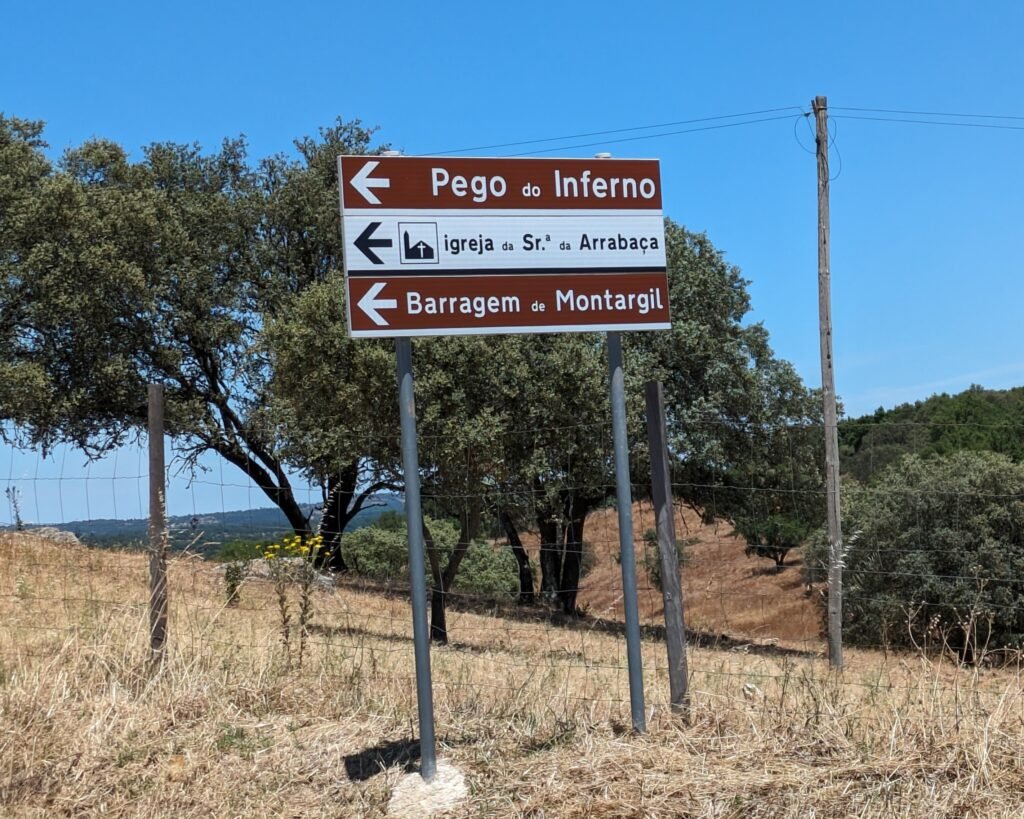
There are no signposts for these sites. From Aldeia Velha, you can drive to Monte dos Borregos (or “Courelo dos Borregos”) and from there, take the road that is signposted towards the “Pego do Inferno” and the “Barragem de Montargil.” (Sign at 39.08727, -8.04731)
You’ll need to use a pin on a map to find the megaliths. (Morenos 1 is at 39.08932, -8.07607, and Morenos 3 is at 39.0916, -8.07972) Or you can get a guide from the Archaeological Centre of Avis. When I visited, it was part of a guided walk put on by the Centre, and that made it very easy (and much more informative!).
Links
- Entry (in English) from Megalithic Portal for Morenos 1 and Morenos 3
- Article (in Portuguese) from Canal Alentejo (news website)
- Post and description (in Portuguese) on Facebook from the Archaeological Centre of Avis
- Description (in Portuguese) from Archaeologist’s Portal of Directorate-General of Cultural Heritage
Nearby
There are scores of prehistoric sites in the region, but they’re not very widely known …and some are submerged in the reservoir. You should check with the Archaeological Centre of Avis for more information. The best known prehistoric sites nearby are the Anta do Penedo da Moura in Avis (about 30km away), or the Antas do Herdade de Monte da Ordem near Pavia (about 25 km away).
